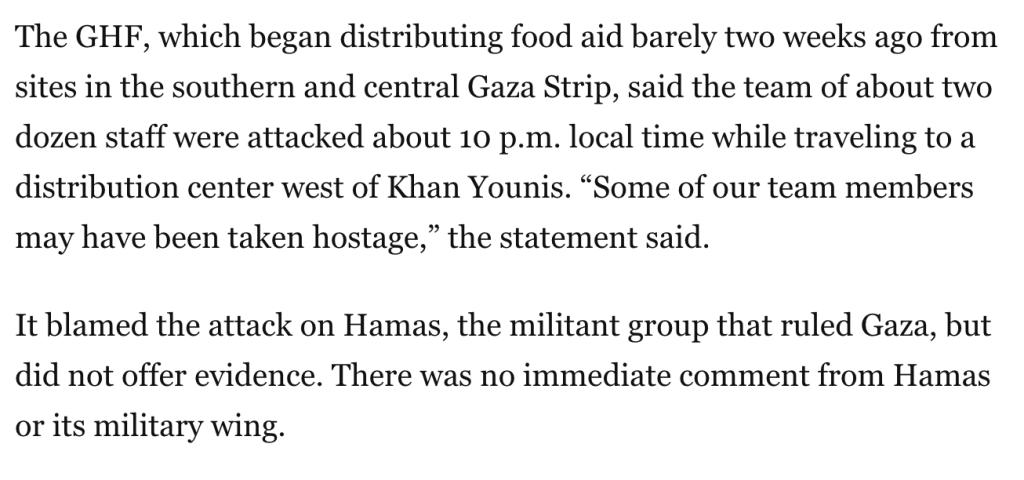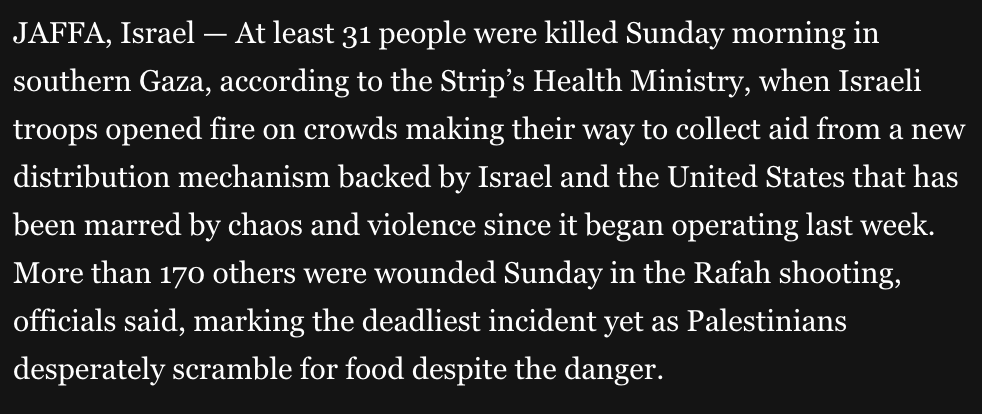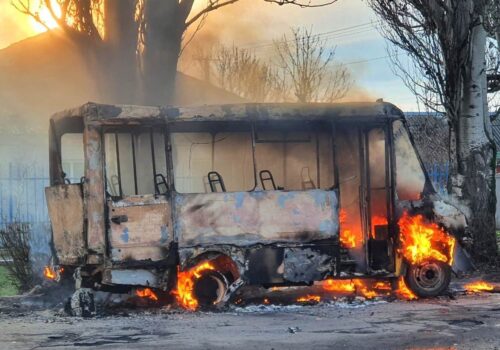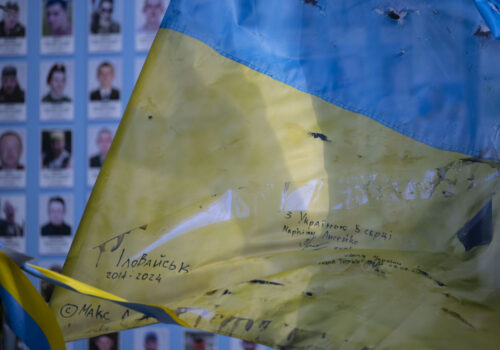When Hamas officials alleged, without evidence, that Israel killed “over 30” Gazans near an aid site, the Washington Post cited the claims uncritically. Less than two weeks later, when an American- and Israeli-backed aid organization accused Hamas of killing eight of its workers, the Post dinged the group for not “offer[ing] evidence.”
The latest Post piece covered a Wednesday night statement from the aid group, the Gaza Humanitarian Foundation (GHF), that said members of its team “were brutally attacked by Hamas” as they traveled “to one of our distribution centers in the area west of Khan Yunis.” In its third paragraph, the piece stated that the GHF “blamed the attack on Hamas, the militant group that ruled Gaza, but did not offer evidence.” It also referred to the GHF as “a controversial aid group backed by the United States and Israel.”

The coverage marked a stark contrast to the outlet’s reporting on Hamas’s claims that Israel had killed Gazan civilians looking for food.
In that instance, the Post published a June 1 piece headlined, “Israeli troops kill over 30 near U.S. aid site in Gaza, health officials say.” It accused Israeli troops of opening “fire on crowds making their way to collect aid from a new distribution mechanism backed by Israel and the United States” and cited a death toll from “the Strip’s Health Ministry.” The piece did not disclose that Hamas controls the ministry, nor did it contain the word “evidence.”

The paper’s coverage of Israel has drawn scrutiny, especially since Oct. 7, over biased reporting and factual inaccuracies that benefit anti-Israel arguments. Six members of its foreign desk previously wrote for Al Jazeera, including Louisa Loveluck, who has earned multiple editors’ notes for her reporting on Israel.
Loveluck was one of the writers of the Post’s June 1 aid site story, which the outlet first edited without adding a note and ultimately corrected. The “early versions” of the piece “fell short of Post standards of fairness and should not have been published in that form,” the outlet said.
Loveluck and her team reached the Pulitzer Prizes’s finalist stage for their reporting on Gaza, an honor Loveluck celebrated with a speech to her newsroom that condemned Israel and failed to mention Hamas or the hostages in Gaza.
The Post did not immediately respond to a request for comment.
Other mainstream outlets followed the Post’s lead when covering the GHF statement. The BBC, for example, said it could not “independently verify the statement, and Hamas has not commented but it previously denied it had threatened the foundation’s staff.” On June 1, it ran a story alleging that “dozens of Palestinians” had been killed trying to access aid and that the “Hamas-run Civil Defense agency said Israeli forces opened fire.”
A CNN piece published on the same day stated that “at least 26 Palestinians” were killed “after Israeli forces open fire near Gaza aid distribution center, health workers say.” The piece also asserted that “there is no evidence of” Hamas stealing aid meant for Gazan civilians. The network applied more scrutiny to the GHF attack, writing that the “controversial US and Israeli-backed aid initiative” had “accused Hamas of carrying out the assault.”
Hamas has not addressed the ordeal, but Hamas-affiliated media outlets reported that “the terror group executed five fighters of the Popular Forces, a rival militia led by tribal leader Yasser Abu Shabab,” while “twelve others were shot in the legs,” according to French outlet i24NEWS. Abu Shabab’s deputy “denied claims that members of the militia were killed by Hamas,” and the GHF called the victims “aid workers,” according to the outlet.
Hamas recently encouraged “resistance security” to “firmly confront anyone who cooperates with the enemy or its agents” in Telegram messages that referenced the GHF, the Washington Free Beacon reported.
The post After Uncritically Citing Hamas To Pin Aid Site Shooting on Israel, WaPo Says Israeli-Backed Aid Org ‘Did Not Offer Evidence’ To Support Claims of Hamas Attack on Its Workers appeared first on .














